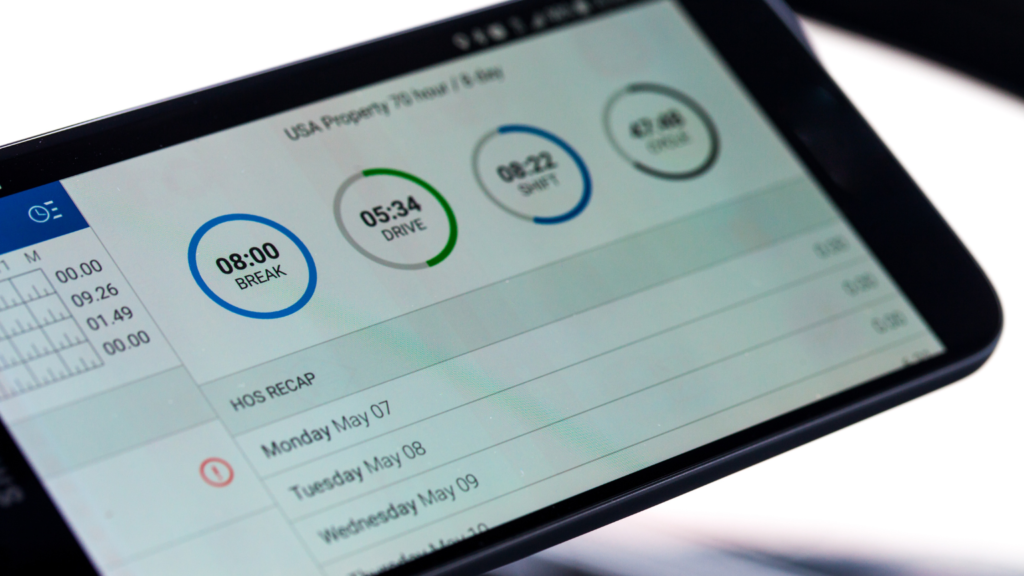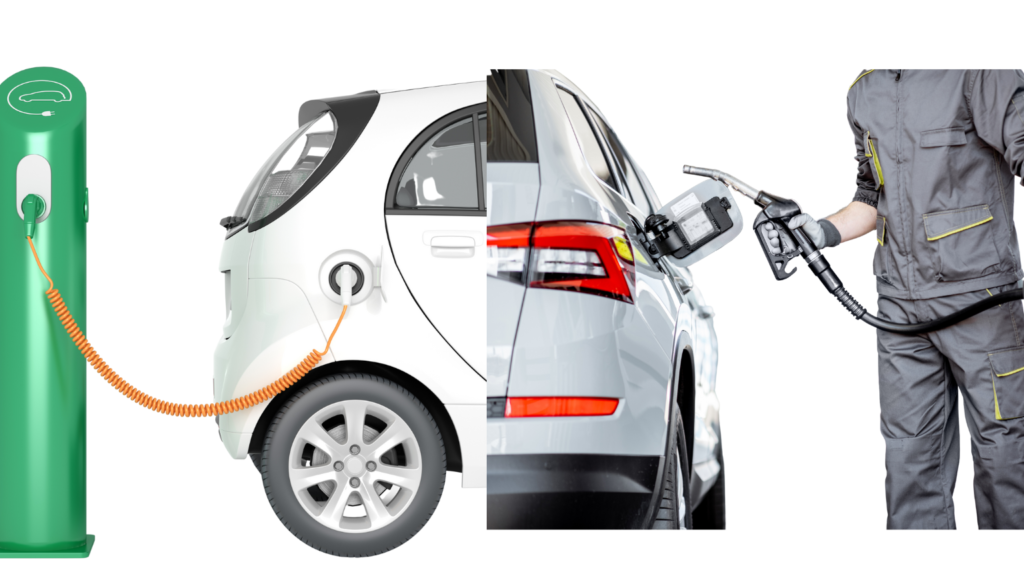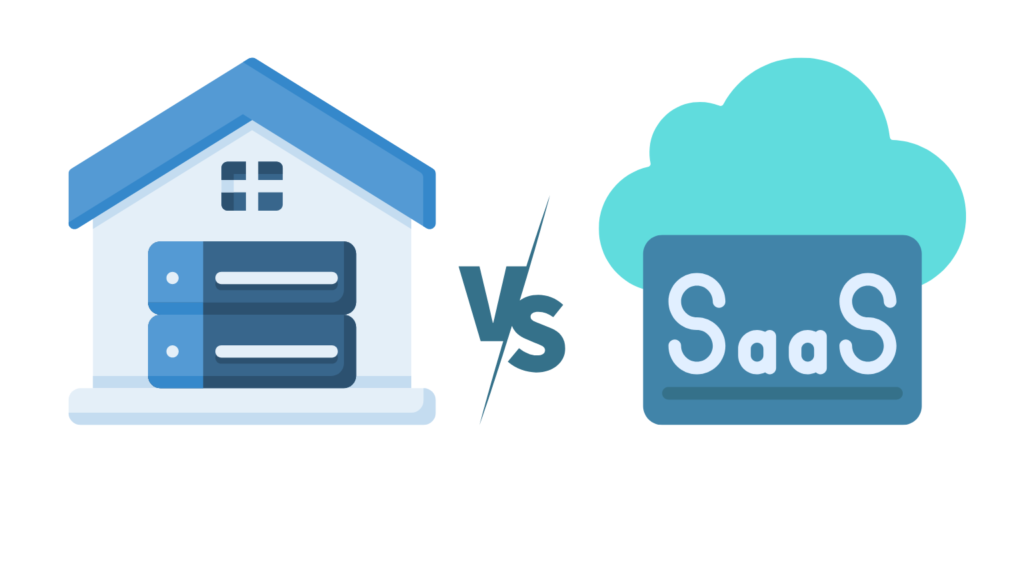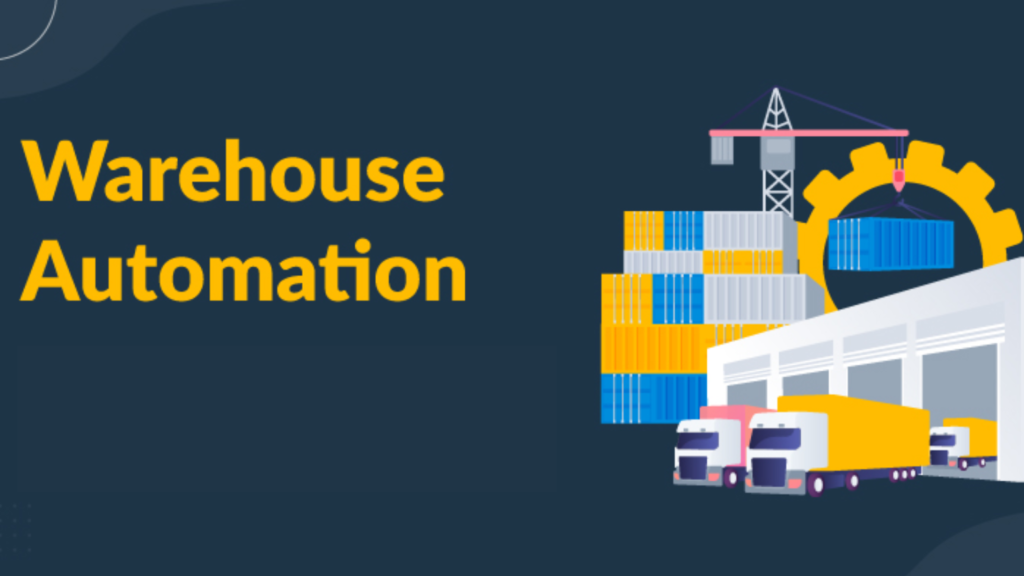Electronic Logging Devices: A Comprehensive Guide to Compliance and Implementation

Electronic Logging Devices (ELDs) are an essential tool for commercial motor vehicle (CMV) drivers and fleet managers to ensure compliance with the Federal Motor Carrier Safety Administration (FMCSA) regulations. ELDs are electronic devices that are used to record a driver’s Record of Duty Status (RODS), replacing the traditional paper logbooks. This article provides a comprehensive guide to ELDs, including their benefits, requirements, and implementation. JSON vs CSV: A Comparative Analysis of Data Formats Understanding Electronic Logging Devices ELDs are electronic devices that are used to record a driver’s RODS. They are designed to replace the traditional paper logbooks that drivers have been using for decades. ELDs are connected to the vehicle’s engine and automatically record driving time, engine hours, vehicle movement, and location information. ELDs also provide drivers with a user-friendly interface to manage their RODS, including editing, certifying, and sharing their logs with law enforcement officers.Tpu vs Gpu: The Giants of Computational Power Benefits of Electronic Logging Devices ELDs provide several benefits to drivers and fleet managers, including: Requirements for Electronic Logging Devices Implementation of Electronic Logging Devices The implementation of ELDs requires careful planning and preparation. Fleet managers must select a reliable and compliant ELD provider and ensure that their drivers are trained on how to use the devices. Drivers must also be provided with the necessary equipment, including tablets or smartphones, to access and manage their RODS. Fleet managers must also ensure that their ELDs are properly installed and configured in their vehicles. ELDs must be connected to the vehicle’s engine and must be able to automatically record driving time, engine hours, vehicle movement, and location information. Fleet managers must also ensure that their ELDs are properly integrated with their fleet management systems to ensure efficient and accurate data transfer. ELD providers must also ensure that their devices are compliant with the FMCSA regulations and that they provide adequate customer support to their clients. ELD providers must also ensure that their devices are regularly updated to ensure compliance with any changes to the regulations. ELD Mandate The ELD mandate was introduced by the FMCSA to improve safety on the roads and reduce the risk of accidents caused by driver fatigue. The mandate requires all CMV drivers who are currently required to maintain RODS to use ELDs to record their driving time. The mandate also requires ELDs to meet specific technical specifications and be certified by the FMCSA. Conclusion ELDs are an essential tool for drivers and fleet managers to ensure compliance with the FMCSA regulations. ELDs provide several benefits, including improved compliance, increased safety, time savings, and cost savings. The implementation of ELDs requires careful planning and preparation, including selecting a reliable and compliant ELD provider, training drivers, and ensuring proper installation and configuration of the devices. ELD providers must also ensure that their devices are compliant with the FMCSA regulations and that they provide adequate customer support to their clients. By implementing ELDs, drivers and fleet managers can improve their compliance, increase safety, and save time and money. References
Smog Check vs Smog Several Test: A Comparative Analysis of California’s Emissions Testing Programs

California’s Smog Check Program has been in place since the 1980s, with the aim of regulating vehicle emissions and controlling pollutants. However, in recent years, there has been a growing debate about the effectiveness of the program in reducing smog levels. Some critics argue that the program is not stringent enough and that more robust testing methods are needed to address the problem of air pollution. In this article, we will compare California’s Smog Check vs Smog Several Test, a more comprehensive emissions testing program, and examine the data to determine which program is more effective in reducing smog levels. California’s Smog Check Program California’s Smog Check program is one of the most comprehensive vehicle emissions testing programs in the country. The Smog Check Program is a biennial emissions testing program that requires all vehicles in California to undergo a smog check every two years. The program is designed to identify vehicles that are emitting excessive pollutants and require repairs to reduce emissions. The program has been in place since the 1980s and has undergone several revisions over the years to make it more effective in reducing smog levels. The program has been successful in reducing air pollution levels in the state, but there are concerns about its effectiveness in reducing emissions from older, high-polluting vehicles. According to the California Air Resources Board (CARB), the Smog Check Program has been successful in reducing emissions from passenger vehicles by more than 90% since it was first implemented in the 1980s. However, despite these gains, air pollution remains a significant problem in California, with many areas still failing to meet federal air quality standards. Electric Car Efficiency vs Gas: A Comprehensive Comparison The Smog Several Test The Smog Several Test is an alternative testing method that has gained popularity in recent years. It is a more comprehensive emissions testing program that goes beyond the standard smog check. The test includes a visual inspection of the vehicle’s emissions control system, a functional inspection of the fuel system, and a tailpipe emissions test. The test is more rigorous than the standard smog check and is designed to identify vehicles that are emitting excessive pollutants. Proponents of the Smog Several Test argue that it provides a more accurate measure of a vehicle’s emissions under real-world driving conditions. The Smog Several Test has been shown to be more effective in reducing emissions from vehicles. A study conducted by the University of California, Riverside found that the Smog Several Test was able to identify more vehicles with excessive emissions than the standard smog check. The study also found that the Smog Several Test was more effective in reducing emissions from older vehicles, which are often the biggest polluters. Another advantage of the Smog Several Test is that it includes a visual inspection of the vehicle’s emissions control system, which can identify problems that may not be detected by the standard smog check. This can help ensure that vehicles are operating at their optimal level and emitting fewer pollutants. Despite these advantages, the Smog Several Test is not without its drawbacks. The test is more time-consuming and expensive than the standard smog check, which can be a burden for some vehicle owners. Additionally, the test is not currently required by law in California, which means that many vehicles are not subject to the more comprehensive testing. Smog Check vs Smog Several Test: Effectiveness of Emissions Inspections Several studies have examined the effectiveness of California’s Smog Check program in reducing air pollution levels. One study by Glazer et al. (1995) found that the program was effective in reducing emissions from newer vehicles, but had little impact on emissions from older, high-polluting vehicles. Another study by Harrington et al. (2000) found that the program was effective in reducing emissions from light-duty vehicles, but had little impact on emissions from heavy-duty vehicles. The effectiveness of the Smog Several Test in reducing emissions is less clear. While proponents of the test argue that it provides a more accurate measure of a vehicle’s emissions under real-world driving conditions, there is limited data on its effectiveness in reducing emissions. One study by Gray and Shimshack (2011) found that environmental monitoring and enforcement programs, including emissions testing programs, can be effective in reducing emissions, but noted that the effectiveness of these programs can vary depending on a variety of factors. Impact of Re-Inspections on Older vs. Newer Vehicles One concern with California’s Smog Check program is that it may be less effective in reducing emissions from older, high-polluting vehicles. This is because older vehicles are more likely to have worn-out parts and outdated technology that can lead to higher emissions. To address this concern, California’s Smog Check program requires older vehicles to undergo more frequent inspections than newer vehicles. However, the effectiveness of this approach is also a subject of debate. Some studies have found that re-inspections are effective in reducing emissions from older vehicles. For example, a study by Klier and Linn (2010) found that re-inspections were effective in reducing emissions from older vehicles in the Chicago area. However, other studies have found that re-inspections have little impact on emissions from older vehicles. For example, a study by Sperling and Cannon (1991) found that re-inspections had little impact on emissions from older vehicles in California. Effectiveness of Emissions Testing Over Time Another concern with California’s Smog Check program is that its effectiveness may decline over time as vehicles become more fuel-efficient and emit fewer pollutants. One study by Nichols et al. (2016) found that the benefits of the program declined sharply over time as older-model cars that benefit most from Smog Checks disappear from the road. This suggests that the program may need to be updated to reflect changes in vehicle technology and emissions standards. While the Smog Check Program has been successful in reducing emissions from passenger vehicles, it may not be enough to address the problem of air pollution in California. The Smog Several Test, which includes a more comprehensive emissions
Electric Car Efficiency vs Gas: A Comparison of Energy Use and Emissions

As the world becomes more environmentally conscious, many people are turning to electric cars as a way to reduce their carbon footprint. However, there is still a debate about whether electric cars are truly more efficient and environmentally friendly than traditional gasoline-powered cars. In this article, we will compare the electric car efficiency vs gas-powered cars, using data from a recent PDF document on the use of natural gas in light-duty vehicles.Artificial Intelligence In Computer Vision Electric Cars: The Future of Transportation? Electric cars are powered by electric motors, which use electricity stored in batteries to generate power. They are seen as a more sustainable alternative to gas-powered cars, as they produce zero emissions and are more energy-efficient. However, there are still concerns about the efficiency of electric cars, particularly in terms of their range and charging time. Efficiency and Emissions Electric cars are powered by batteries that store energy from an external source, such as a charging station or a home outlet.Electric cars can travel 325 miles on one million British thermal units (Btu) of natural gas, which is equivalent to about nine gallons of gasoline. This is significantly more than the 200 miles that gasoline-powered cars can travel on the same amount of energy. In terms of emissions, electric cars produce 430 grams of carbon dioxide equivalent (gCO2e) per mile, which is lower than the 390 gCO2e per mile produced by natural gas internal combustion engine vehicles. However, it is important to note that the emissions from electric cars depend on the source of the electricity used to charge them. If the electricity comes from a coal-fired power plant, for example, the emissions will be higher than if the electricity comes from a renewable source such as wind or solar. Gas-Powered Cars: The Traditional Choice Gas-powered cars, on the other hand, are powered by internal combustion engines (ICEs), which burn gasoline to generate power. They are the traditional choice for most drivers, as they are widely available and have a longer range than electric cars. However, they are also less energy-efficient and produce harmful emissions. Efficiency and Emissions Gasoline-powered cars are powered by internal combustion engines that burn gasoline to produce energy. Gasoline-powered cars can travel 200 miles on one million Btu of natural gas. In terms of emissions, gasoline-powered cars produce 17% average efficiency of gasoline engines for typical drive cycles and the relative MPGGE of each vehicle. Drive cycle simulations adjusted for on-road performance were used to estimate miles/mmBtu. Electric Car Efficiency vs Gas-Powered Cars When comparing the efficiency and emissions of electric cars and gasoline-powered cars, it is clear that electric cars are more efficient and produce fewer emissions. However, it is important to consider the source of the electricity used to charge electric cars. If the electricity comes from a renewable source, such as wind or solar, the emissions from electric cars are significantly lower than those from gasoline-powered cars. Real-Life Comparison To compare the energy consumption of electric and gas-powered cars, A research compare the energy consumption of an electric car and a diesel-powered car in real-life situations. Short Distance Tests The researchers performed short distance tests on level ground and a 6% uphill slope for both vehicles. The tests were performed at several fixed vehicle speeds. The results showed that the electric car consumed less energy than the diesel-powered car in both scenarios. The electric car consumed an average of 0.18 kWh/km on level ground and 0.23 kWh/km on the uphill slope, while the diesel-powered car consumed an average of 0.27 kWh/km on level ground and 0.32 kWh/km on the uphill slope. Long Distance Tests The researchers also performed long distance tests on both vehicles. The tests were performed at several fixed vehicle speeds, ranging from 60 km/h to 120 km/h. The results showed that the electric car consumed less energy than the diesel-powered car at all speeds. The electric car consumed an average of 0.16 kWh/km, while the diesel-powered car consumed an average of 0.23 kWh/km. Overall, the results of the test program showed that electric cars are more energy-efficient than gas-powered cars, particularly in urban traffic situations. This is because electric cars have no idling losses, no inefficient clutching at starts, and they can recover a portion of the braking energy through regenerative braking. In fact, hybridization has been an effective way for some sports vehicle brands to meet emission standards without sacrificing performance figures. Benefits of Electric Cars The benefits of electric cars go beyond just energy efficiency. They also produce zero emissions, which is better for the environment and public health. Additionally, electric cars are quieter and require less maintenance than gas-powered cars. They also have lower operating costs, as electricity is cheaper than gasoline. Drawbacks of Electric Cars While electric cars are more efficient and produce fewer emissions than gasoline-powered cars, there are still some drawbacks to consider. One of the main drawbacks is the limited range of electric cars. While electric cars can travel up to 325 miles on one million Btu of natural gas, this range can be significantly reduced if the car is driven in extreme temperatures or if the battery is not fully charged. Additionally, charging an electric car can take several hours, which can be inconvenient for drivers who need to travel long distances. Another drawback of electric cars is the cost. Electric cars are generally more expensive than gasoline-powered cars, although the cost is decreasing as technology improves and production increases. Additionally, the cost of replacing the battery in an electric car can be significant, although the batteries are designed to last for several years. Conclusion Electric cars are more efficient and produce fewer emissions than gasoline-powered cars, according to the data from the PDF document on the use of natural gas in light-duty vehicles. However, it is important to consider the source of the electricity used to charge electric cars, as emissions can be higher if the electricity comes from a non-renewable source. Additionally, there are still some drawbacks
Anti-Lock Brake Systems: A Comprehensive Overview

Anti-lock brake systems (ABS) have become a standard feature in modern automobiles. ABS is an advanced safety system that prevents the wheels from locking up during hard braking, thereby allowing the driver to maintain steering control and avoid accidents. In this article, we will provide a comprehensive overview of ABS, including its functions, principles, and benefits. Guide on Objection Detection: Everything you Need to Know Understanding Anti-Lock Brake Systems ABS is an automated system that runs on the principles of threshold braking and cadence braking. It uses sensors to detect wheel speed and applies the necessary torque to maintain optimum slip ratio. The slip ratio is the difference between the vehicle speed and the wheel rotation speed. ABS is designed to prevent the wheels from locking up during hard braking, which can cause the vehicle to skid and lose control. How does the Anti-Lock Brake System Work? ABS works by monitoring the wheel speed and applying the brakes in a way that prevents the wheels from locking up. When the driver applies the brakes, the ABS controller reduces the brake pressure on any wheel that is about to lock up. This allows the wheel to continue rotating and maintain traction with the road surface. The ABS controller then reapplies the brake pressure once the wheel speed has decreased to a safe level. This process is repeated continuously until the vehicle comes to a stop. What is Named Entity Recognition and its Objective Benefits of ABS Limitations of ABS Types of ABS There are two main types of ABS: four-channel and three-channel. Four-channel ABS is the most common type and has a separate sensor and control valve for each wheel. This allows the system to adjust the brake pressure on each wheel independently, providing maximum control and stability. Three-channel ABS, on the other hand, has one sensor and control valve for each of the front wheels and a single control valve for the rear wheels. This type of ABS is less expensive but provides less control and stability than four-channel ABS. Maintenance of ABS Like any other safety system, ABS requires regular maintenance to ensure that it is functioning properly. The ABS system should be inspected and tested at least once a year, and any problems should be addressed immediately. The brake fluid should also be checked regularly and replaced as needed, as contaminated or degraded brake fluid can affect the performance of the ABS system. Conclusion ABS is an essential safety feature that has become a standard in modern automobiles. ABS prevents the wheels from locking up during hard braking, allowing the driver to maintain steering control and avoid accidents. ABS offers several benefits, including improved vehicle control, reduced stopping distance, and minimized risk of skidding and loss of control. However, ABS does have some limitations, and drivers should be aware of these limitations when driving on certain road surfaces. Overall, ABS is an important safety system that can help prevent accidents and save lives. References
Robot as a Service Companies: A Technology Trend Every Business Must Consider

The use of robotics in business has been growing rapidly in recent years, with more and more companies adopting robotics technology to improve efficiency, productivity, and safety. One of the most significant developments in this area is the emergence of Robot as a Service (RaaS) companies. According to ABI Research, there will be 1.3 million installations of RaaS by 2026 generating $34 billion in revenue. In this article, we will explore what RaaS entails, the reasons for its growth, and some companies that offer RaaS solutions.Database vs Data Warehouse Understanding Robot as a Service Companies Robot as a Service (RaaS) companies are businesses that provide robotic automation solutions to other businesses on a subscription basis. RaaS companies offer a range of services, including the installation, maintenance, and support of robotic automation systems. By adopting RaaS, businesses can access the benefits of robotics technology without the need for a large upfront investment. The solution experts work with each customer to determine how robotic automation will perform best in their environment and for their business. By adopting RaaS model, businesses can start gaining the benefits of robotic automation. Advantages of Robot as a Service Companies There are several advantages to using RaaS companies for robotic automation solutions. One of the main advantages is cost savings. RaaS companies offer a subscription-based model that allows businesses to access the benefits of robotics technology without the need for a large upfront investment. This can be particularly beneficial for small and medium-sized businesses that may not have the resources to invest in robotics technology. Another advantage of RaaS companies is the expertise they provide. RaaS companies have a team of experts who are trained in the installation, maintenance, and support of robotic automation systems. This means that businesses can access the benefits of robotics technology without the need for in-house expertise. RaaS companies also offer flexibility. Businesses can choose the level of service they require, from basic installation and maintenance to ongoing support and optimization. This means that businesses can tailor their robotic automation solutions to their specific needs and budget. Challenges of Robot as a Service Companies While there are many advantages to using RaaS companies for robotic automation solutions, there are also some challenges that need to be addressed. One of the main challenges is the need for customization. Robotic automation solutions need to be tailored to the specific needs of each business, and this can be a complex and time-consuming process. RaaS companies need to have the expertise and resources to customize their solutions to meet the unique needs of each business. Another challenge is the need for ongoing support. Robotic automation systems require ongoing maintenance and support to ensure they continue to operate effectively. RaaS companies need to have the resources and expertise to provide ongoing support to their customers. Finally, there is the challenge of security. Robotic automation systems can be vulnerable to cyber attacks, and RaaS companies need to have robust security measures in place to protect their customers’ data and systems. The Future of Robot as a Service Companies Despite these challenges, the future of RaaS companies looks bright. The use of robotics technology in business is expected to continue to grow, and RaaS companies are well-positioned to meet this demand. According to a source, there will be 1.3 million installations of RaaS by 2026, indicating a significant growth opportunity for RaaS companies. One of the key drivers of this growth is the increasing demand for automation in the manufacturing industry. Robotic automation solutions can help manufacturers improve efficiency, productivity, and safety, and RaaS companies are well-positioned to provide these solutions on a subscription basis. Another driver of growth is the increasing sophistication of robotics technology. As robotics technology continues to evolve, RaaS companies will be able to offer more advanced and customized solutions to their customers. Best Computer Vision Startups in 2023 You Need to Know Companies that Offer RaaS Solutions There are several companies that offer RaaS solutions. Let’s take a look at some of them: 1. Boston Dynamics Boston Dynamics is a robotics company that offers RaaS solutions for a variety of industries, including construction, logistics, and manufacturing. Their robots are designed to perform a range of tasks, from carrying heavy loads to inspecting hazardous environments. 2. Blue River Technology Blue River Technology is a company that offers RaaS solutions for the agriculture industry. Their robots are designed to help farmers improve their crop yields and reduce their use of pesticides. The robots use computer vision and machine learning to identify and spray individual plants with precision. 3. Fetch Robotics Fetch Robotics is a company that offers RaaS solutions for the logistics industry. Their robots are designed to help warehouses and distribution centers improve their efficiency and reduce their operational costs. The robots can perform a range of tasks, from transporting goods to picking and packing orders. 4. ABB Robotics ABB Robotics is a company that offers RaaS solutions for manufacturing and industrial automation. Their robots are designed to perform a range of tasks, from welding and painting to assembly and material handling. ABB Robotics offers a range of RaaS solutions, including collaborative robots that can work alongside human workers. 5. Universal Robots Universal Robots is a company that offers RaaS solutions for small and medium-sized businesses. Their robots are designed to be easy to use and can be programmed by non-technical staff. Universal Robots’ robots can perform a range of tasks, from packaging and palletizing to machine tending and assembly. Conclusion RaaS companies are the future of robotics in business. They offer a range of services, including the installation, maintenance, and support of robotic automation systems, on a subscription basis. RaaS companies provide businesses with access to the benefits of robotics technology without the need for a large upfront investment. While there are some challenges associated with RaaS companies, such as the need for customization, ongoing support, and security, the future looks bright. The use of robotics technology in business is expected to continue
DALL-E Image Generator: A Revolutionary AI Technology

In recent years, artificial intelligence has made significant strides in the field of image generation. One of the most impressive examples of this is the DALL-E system, created by OpenAI. This system generates original synthetic images corresponding to an input text as a caption. In this article, we will explore the capabilities of DALL-E image generator and its potential applications. Data Warehouse vs Data Mart: A Detailed Comparison DALL-E Image Generator DALL-E is a revolutionary AI technology that generates images from text captions. It is a project by OpenAI, which aims to create a 12 billion parameters version of GPT-3 and a dataset comprised of 3.3 million text-image pairs. The project is a significant breakthrough in the field of AI, as it can generate high-quality images from text captions. How DALL-E Works DALL-E works by using a transformer to model text and image tokens as a single stream of data. The model uses two stages of training to handle the memory issue caused by using pixels as image tokens. The first stage of training involves training the model to generate text descriptions of images. The second stage of training involves training the model to generate images from text descriptions. The model uses a pre-trained contrastive model called CLIP to rank DALL-E’s generated images. The input to CLIP is an image and a caption, and the output is a score. The more images CLIP ranks, the better the quality of the best image. Features of DALL-E Image Generator DALL-E has several features that make it a revolutionary AI technology. One of its most significant features is its ability to generate high-quality images from text captions. The images generated by DALL-E are highly detailed and realistic, making them suitable for use in various applications. Another feature of DALL-E is its ability to combine unrelated concepts. The model can generate images that combine two or more unrelated concepts, creating unique and creative images. This feature makes DALL-E an excellent tool for artists and designers who want to create unique and creative images.Visual Studio Code vs Visual Studio Applications of DALL-E Image Generator DALL-E has several applications in various fields. One of its most significant applications is in the field of art and design. Artists and designers can use DALL-E to generate unique and creative images for their projects. The model can generate images that combine unrelated concepts, allowing artists and designers to create images that are not possible with traditional image generation techniques. DALL-E also has applications in the field of e-commerce. Online retailers can use DALL-E to generate images of products that do not exist yet. For example, a retailer can use DALL-E to generate images of a new product that is still in the design phase. This can help retailers save time and money by generating images of products before they are physically produced. DALL-E can also be used in the field of education. Teachers can use DALL-E to generate images that help students understand complex concepts. For example, a teacher can use DALL-E to generate images that illustrate the structure of a molecule or the process of photosynthesis. Training DALL-E Training DALL-E is a challenging task due to the large amount of data and the size of the model. The model has 12 billion parameters, which is more than ten times the size of GPT-3. To train the model, OpenAI used a distributed training approach, which involved training the model on multiple GPUs and TPUs. The training data for DALL-E consists of 3.3 million text-image pairs. The images were sourced from the internet and are licensed under Creative Commons. The text descriptions were generated using a combination of human and machine-generated descriptions. Results of DALL-E OpenAI has released several examples of images generated by DALL-E, which demonstrate the model’s capabilities. The images generated by DALL-E are highly detailed and realistic, and they can combine multiple concepts to create unique and creative images. One of the most impressive examples of DALL-E’s capabilities is an image of a snail made out of a stack of staplers. The image demonstrates the model’s ability to combine unrelated concepts to create a unique and creative image. Limitations of DALL-E While DALL-E is a significant breakthrough in the field of AI, it has some limitations. One of the main limitations of DALL-E is its reliance on text descriptions. The model can only generate images based on the text descriptions it receives, which means that it cannot generate images that are not described in the text. Another limitation of DALL-E is its computational requirements. The model has 12 billion parameters, which makes it computationally expensive to train and run. This means that DALL-E is not accessible to everyone, and it may be limited to large organizations with access to high-performance computing resources. Future of DALL-E The future of DALL-E is promising, and we can expect to see more innovative uses of the technology in various fields. OpenAI has already released several examples of images generated by DALL-E, which demonstrate the model’s capabilities. As the technology continues to evolve, we can expect to see more advanced versions of DALL-E that can generate even more realistic and detailed images. Understanding DALL-E 2 In a continually evolving AI landscape, it’s reasonable to anticipate advancements and improvements. That leads us to the question, “How to use dall-e 2?” As of now, OpenAI has not announced a “DALL-E 2.” It’s essential to rely on official OpenAI sources for information on any potential updates. Online news and Twitter are the ideal sources to learn about new versions of DALL-E. Conclusion DALL-E is a revolutionary AI technology that generates images from text captions. DALL-E has several features that make it a revolutionary AI technology. It can generate high-quality images from text captions, combine unrelated concepts, and has applications in various fields such as art and design, e-commerce, and education. In conclusion, DALL-E is a significant breakthrough in the field of AI, and its potential applications are vast. As the technology continues to evolve,
On-Premise vs SaaS: A Comprehensive Guide to Comparing Costs and Benefits

One of the key decisions facing enterprise IT leaders is whether to buy software and host it on servers they own or control, or subscribe to a Software as a Service (SaaS) solution. This decision can have significant long-term cost implications, and it’s important to carefully consider the factors involved in each approach. In this article, we’ll explore the main differences between on-premise vs SaaS, and provide frameworks for creating financial models for each approach. Accelerate Your Career in AI with Best Machine Learning Courses What is On-Premise Software? On-premise software refers to software that is installed and run on servers that are owned or controlled by the organization. This means that the organization is responsible for maintaining the hardware and software infrastructure required to run the software. On-premise software is typically licensed on a perpetual basis, meaning that the organization pays an upfront fee for the software and then pays ongoing maintenance fees to receive updates and technical support.Power Your Analytics with the Best Business Intelligence Dataset Introducing Software as a Service (SaaS) Software as a Service (SaaS) refers to software that is delivered over the internet and hosted by a third-party provider. This means that the organization does not need to maintain any hardware or software infrastructure to run the software. Instead, they pay a subscription fee to the provider to access the software. SaaS providers are responsible for maintaining the software and infrastructure required to run it, as well as providing technical support and updates. On-Premise vs SaaS: Cost Comparison When comparing the costs of on-premise software and SaaS, there are several factors to consider. These include: Pricing Models Pricing models for on-premise software can be complex. Things you’ll need to consider include how the license and maintenance fees accumulate over a three-year or five-year period, the combination of upfront and long-term recurring fees, including the costs of major upgrades and technical support. SaaS pricing models are often more flexible – allowing you to pay monthly, quarterly or annually to suit your cash flow requirements. Simpler approaches make it easier to plan budgets and avoid cost overruns. Upfront Costs On-premise software typically requires a significant upfront investment to purchase and install the software, as well as the hardware and infrastructure required to run it. SaaS, on the other hand, requires little to no upfront investment, as the software is hosted by the provider and accessed over the internet. Maintenance Costs On-premise software requires ongoing maintenance and support, which can be costly. This includes the cost of updates, upgrades, and technical support. SaaS providers are responsible for maintaining the software and infrastructure required to run it, as well as providing technical support and updates. This means that maintenance costs are included in the subscription fee, and there are no additional costs for updates or technical support. Scalability On-premise software can be difficult to scale, as it requires additional hardware and infrastructure to support additional users or increased usage. SaaS, on the other hand, is designed to be scalable, and can easily accommodate additional users or increased usage without requiring any additional hardware or infrastructure. Customization On-premise software can be customized to meet the specific needs of the organization, but this customization can be costly and time-consuming. SaaS, on the other hand, is typically less customizable, but can be configured to meet the needs of the organization without requiring any additional development or customization. Security On-premise software is typically considered more secure, as the organization has complete control over the hardware and infrastructure required to run the software. SaaS, on the other hand, relies on the security measures implemented by the provider, which may not meet the specific security requirements of the organization. Productivity The right software setup can empower your employees to work more efficiently, by providing them with time-saving features. SaaS solutions work natively on mobile devices, allowing employees to be more productive by working from anywhere, on any device. Many on-premise solutions require a VPN or custom-built mobile app for the software to work on mobile devices. Return on Investment (ROI) When comparing the ROI of on-premise software and SaaS, it’s important to consider both the short-term and long-term costs and benefits of each approach. On-premise software requires a significant upfront investment, but may provide a higher ROI over the long term. SaaS, on the other hand, requires little to no upfront investment, but may provide a lower ROI over the long term due to ongoing subscription fees. Which Solution is Best for Your Business? When deciding between on-premise and SaaS solutions, there are several factors to consider. These include: Budget: On-premise solutions require a significant upfront investment, while SaaS solutions require ongoing subscription fees. Consider your budget and cash flow when making a decision. Control: If you require complete control over your software and data, on-premise solutions may be the better choice. If you are comfortable with a third-party provider managing your software, SaaS may be a good option. Scalability: If you anticipate significant growth in your business, SaaS solutions may be more scalable and easier to manage. On-premise solutions may be more difficult to scale up as your business grows. Internet connectivity: If you are located in an area with poor internet connectivity, on-premise solutions may be the better choice. If you have reliable internet access, SaaS solutions may be more convenient. Conclusion When deciding between on-premise software and SaaS, it’s important to carefully consider the costs and benefits of each approach. While on-premise software may provide more control and customization, it requires a significant upfront investment and ongoing maintenance costs. SaaS, on the other hand, requires little to no upfront investment and provides greater scalability and flexibility, but may not meet the specific security or customization requirements of the organization. By carefully considering these factors, organizations can make an informed decision that meets their specific needs and budget. References
Fleet Workflow Automation: How Technology is Revolutionizing Fleet Management

Fleet management is a critical aspect of any organization that relies on vehicles to carry out its operations. From logistics companies to public transportation providers, fleet managers are tasked with ensuring that their vehicles are operating efficiently, safely, and cost-effectively. However, managing a fleet of vehicles can be a daunting task, especially when it comes to data collection, analysis, and decision-making. Fortunately, advances in technology have made it possible to automate many aspects of fleet management, from data acquisition to driver performance monitoring. In this article, we will explore how fleet workflow automation is revolutionizing the way organizations manage their vehicles.Front End vs Back End Languages The Role of Technology in Fleet Workflow Automation Fleet workflow automation involves the use of technology to streamline the fleet management process. This includes the use of sensors, GPS tracking, telematics, and other technologies to collect data on vehicle performance, driver behavior, and other key metrics. This data is then analyzed using advanced algorithms and machine learning techniques to identify patterns, trends, and anomalies. The insights gained from this analysis can be used to optimize fleet operations, reduce costs, and improve safety. One of the key technologies used in fleet workflow automation is the Global Positioning System (GPS). GPS allows fleet managers to track the location of their vehicles in real-time, which can be useful for route optimization, dispatching, and monitoring driver behavior. GPS data can also be used to monitor fuel consumption, vehicle speed, and other key metrics that can impact fleet performance. Another important technology used in fleet workflow automation is Onboard Diagnostic (OBD) systems. OBD systems are used to monitor the performance of a vehicle’s engine and other systems, and can detect issues before they become major problems. This can help fleet managers schedule maintenance and repairs more efficiently, reducing downtime and repair costs. Radio Frequency Identification (RFID) is another technology that is commonly used in fleet workflow automation. RFID tags can be attached to vehicles, drivers, and other assets, allowing fleet managers to track their location and movement. This can be useful for inventory management, security, and other purposes. Finally, WiFi technology is used to enable wireless communication between vehicles and a centralized server. This allows fleet managers to collect data from multiple vehicles in real-time, and to monitor driver behavior and vehicle performance remotely. Benefits of Fleet Workflow Automation Fleet workflow automation offers a number of benefits for organizations that rely on vehicles to carry out their operations. These benefits include: Improved Efficiency: By automating many aspects of fleet management, organizations can improve their efficiency and reduce costs. For example, GPS tracking can be used to optimize routes and reduce fuel consumption, while OBD systems can help prevent breakdowns and reduce maintenance costs. Increased Safety: Fleet workflow automation can also improve safety by monitoring driver behavior and identifying risky driving practices. This can help organizations reduce accidents and improve driver training programs. Better Decision-Making: By collecting and analyzing data on vehicle performance, driver behavior, and other key metrics, fleet managers can make more informed decisions about their operations. This can help organizations optimize their fleet, reduce costs, and improve customer satisfaction. Enhanced Customer Service: Fleet workflow automation can also improve customer service by providing real-time updates on vehicle locations and estimated arrival times. This can help organizations provide more accurate and reliable service to their customers. Challenges and Limitations of Fleet Workflow Automation While fleet workflow automation offers many benefits, there are also some challenges and limitations to consider. For example, implementing a fleet management system can be expensive and time-consuming, and may require significant changes to an organization’s existing processes and infrastructure. Additionally, there may be concerns around data privacy and security, as well as the potential for technical issues or system failures. Another challenge is ensuring that the system is user-friendly and accessible to all stakeholders. Fleet managers, drivers, and other personnel may require training and support to effectively use the system and interpret the data it provides. Conclusion Fleet workflow automation is transforming the way organizations manage their vehicles, offering a range of benefits including improved efficiency, increased safety, better decision-making, and enhanced customer service. By leveraging technologies such as GPS, OBD, RFID, and WiFi, organizations can collect and analyze data on vehicle performance and driver behavior, and use this information to optimize their fleet operations. While there are challenges and limitations to consider, the potential benefits of fleet workflow automation make it a compelling option for organizations looking to improve their fleet management processes. References
Snipers vs Runners Code: The Ultimate Guide to Fortnite Creative Maps

Fortnite Creative mode has become a popular way for players to showcase their creativity and challenge their skills. One of the most exciting game modes in Fortnite Creative is Snipers vs Runners, where players are divided into two teams: Snipers and Runners. The Snipers’ objective is to take down the Runners using a sniper rifle before they reach the end of the course. The Runners’ objective is to dodge the Snipers’ bullets and reach the end of the course. In this article, we will explore the best Snipers vs Runners code maps in Fortnite Creative and provide tips and tricks for both Snipers and Runners. Best Snipers vs Runners Maps in Fortnite Creative Snipers VS Climbers Map Code: 6916-5197-9712 This map by Blanky is a different take on the Snipers vs Runners game mode. Instead of Runners, players are climbers who must reach the top of a mountain while avoiding the Snipers’ bullets. The map is challenging and requires players to use their climbing skills to dodge the Snipers’ bullets. Snipers vs Runners Code – Subway Map Code: 3883-4698-7806 Subway is a Snipers vs Runners map created by the famous custom creator Jalf. The map is set in a subway station and requires Runners to navigate through the tunnels while avoiding the Snipers’ bullets. The map is challenging and requires Runners to use their dodging skills to avoid the Snipers’ bullets. Sniper vs Runner – Palace Map Code: 9664-8349-8261 Palace is a Snipers vs Runners map created by the custom creator Jalf. The map is set in a lavish palace and requires Runners to navigate through the rooms while avoiding the Snipers’ bullets. The map is challenging and requires Runners to use their dodging skills to avoid the Snipers’ bullets. Tips and Tricks for Snipers Use the terrain to your advantage As a Sniper, you should use the terrain to your advantage. Look for high ground and use it to get a better view of the course. You can also use obstacles to your advantage by hiding behind them and taking shots at the Runners when they are exposed. Predict the Runners’ movements As a Sniper, you should try to predict the Runners’ movements. Look for patterns in their movements and try to anticipate where they will go next. This will help you aim your shots more accurately and increase your chances of taking down the Runners. Use different types of sniper rifles In Fortnite Creative, there are different types of sniper rifles with different scopes and damage levels. As a Sniper, you should experiment with different types of sniper rifles to find the one that suits your playstyle. Some sniper rifles have a higher damage level but a slower rate of fire, while others have a lower damage level but a faster rate of fire. Tips and Tricks for Runners Use the terrain to your advantage As a Runner, you should use the terrain to your advantage. Look for cover and use it to hide from the Snipers’ bullets. You can also use obstacles to your advantage by using them as a shield to block the Snipers’ shots. Move unpredictably As a Runner, you should try to move unpredictably. Don’t move in a straight line, as this will make it easier for the Snipers to take you down. Instead, move in a zigzag pattern and change direction frequently to make it harder for the Snipers to predict your movements. Use power-ups In some Snipers vs Runners maps, there are power-ups that can help you as a Runner. These power-ups can give you extra speed, make you invisible, or give you a shield to protect you from the Snipers’ bullets. As a Runner, you should look for these power-ups and use them to your advantage. AI That Generates Images From Text Conclusion Snipers vs Runners is a popular game mode in Fortnite Creative that requires both skill and strategy. By using the tips and tricks provided in this article, you can improve your gameplay and become a better Sniper or Runner. Whether you prefer climbing mountains or navigating through palaces, there is a Snipers vs Runners map in Fortnite Creative that will challenge you and provide hours of fun. So grab your sniper rifle or put on your running shoes and get ready to take on the challenge of Snipers vs Runners! Front End vs Back End Languages
Warehouse Automation: Streamlining Supply Chains with Technology

Warehouse automation has become an increasingly popular solution for companies looking to improve their supply chain efficiency and reduce costs. In this article, we will explore the benefits and challenges of implementing automation in warehouse operations, as well as the different types of technology available for tracking and moving goods.AI That Generates Images From Text What is Warehouse Automation? Warehouse automation refers to the use of technology to mechanize traditional warehouse operations. This includes the use of robotics and AI as well as machine learning. By eliminating manual labor in many processes, automation enhances efficiency, reduces errors, and allows for more accurate inventory tracking. The need for automation in warehouses has arisen due to the cost pressure and the need for efficiency in supply chains. Automation can help reduce labor costs, improve accuracy, and increase productivity. With the rise of e-commerce and the demand for faster delivery times, automation has become a necessity for many companies. Types of Automation Technology Warehouse automation is not a one-size-fits-all concept. It encompasses a range of technologies and systems, each designed to streamline specific warehouse operations. Here, let’s look at some of the main types of warehouse automation: Automated Storage and Retrieval Systems (AS/RS): This type of automation handles storing and retrieving items in a warehouse. For instance, Amazon uses Kiva robots to transport goods around its warehouses, minimizing human intervention. Automated Guided Vehicles (AGVs) and Autonomous Mobile Robots (AMRs): These self-guided robots carry materials around the warehouse, following a set path or navigating autonomously. Warehouse Execution Systems (WES): WES are execution systems that coordinate and direct the various automated elements within the warehouse, maximizing efficiency. Sortation Systems: These automated systems sort a wide variety of items at high speeds, facilitating quicker order fulfillment. Conveyor and Conveyor Belt Systems: Traditional yet effective, these systems transport goods from one area of the warehouse to another, reducing manual handling and enhancing efficiency. Picking Systems: Automated picking systems, such as pick-to-light or voice-directed picking, speed up the picking process and reduce errors.Front End vs Back End Languages Benefits of Automation One of the main benefits of automation is increased efficiency. Automated systems can work around the clock, reducing the need for human labor and increasing productivity. Automation can also improve accuracy, reducing the risk of errors and improving inventory management. Additionally, automation can help reduce costs by reducing labor costs and improving inventory management. Challenges of Automation While automation can bring many benefits, there are also several challenges to consider. One of the main challenges is the cost of implementation. Automation systems can be expensive to install and maintain, and may require significant changes to the warehouse layout. Additionally, automation can lead to job loss, which can be a concern for employees. Future of Automation As technology continues to advance, the future of warehouse automation looks promising. New technologies such as drones and autonomous mobile robots (AMRs) are being developed to further improve warehouse efficiency. Additionally, the use of artificial intelligence (AI) and machine learning can help optimize warehouse operations and improve inventory management. For example, AI can be used to predict demand and optimize inventory levels, reducing the risk of stockouts and overstocking. Conclusion Warehouse automation has become a necessity for many companies looking to improve their supply chain efficiency and reduce costs. While there are challenges to consider, the benefits of automation are clear. Automation can help companies improve their productivity, accuracy, and inventory management, while reducing labor costs. As technology continues to advance, the future of warehouse automation looks promising, with new technologies and innovations being developed to further improve efficiency and reduce costs. Companies that invest in automation now will be better positioned to compete in the future and meet the demands of their customers. References
